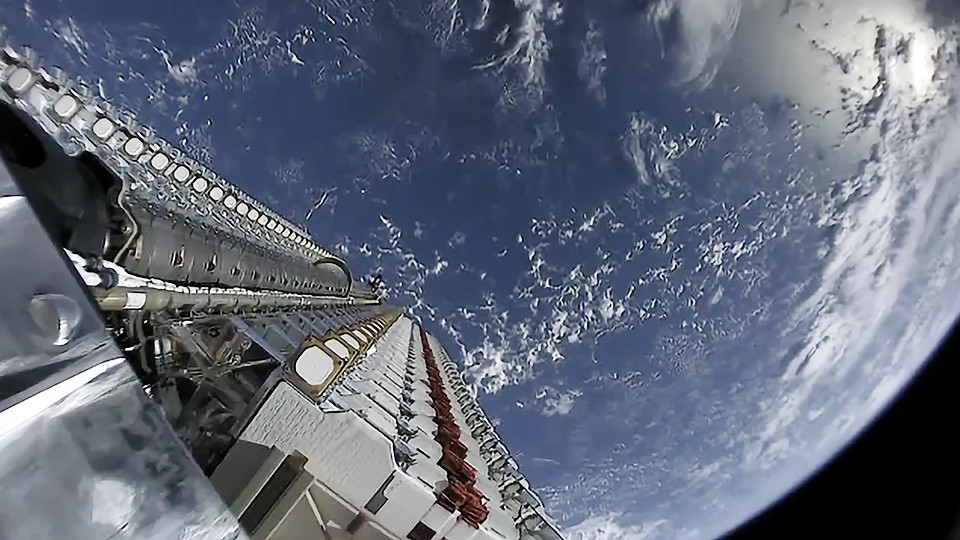SpaceX has lost communication with three of its 60 Starlink satellites

They will continue to orbit Earth but will eventually be brought down by gravity, burning up in the atmosphere.
The news: SpaceX has provided an update after the launch of its broadband satellites in May. Of the 60, all but three are in communication with the company’s network of ground stations. Forty-five of the satellites used their thrusters to reach their planned 550-kilometer altitude, five are currently in the process of raising their altitude, and five more are preparing to start climbing higher.
“There is a lot of new technology here, so it’s possible that some of these satellites may not work,” Musk said in a press conference.
Two are still in communication but will be “intentionally deorbited to simulate an end-of-life disposal,” SpaceX said. It didn’t comment on fears the satellites’ visibility could interfere with scientific observations.
Next steps: Starlink will shortly start testing the satellites’ ability to transmit broadband signals, specifically examining latency and capacity by streaming videos and games in North America.
Closely watching: Competitors like OneWeb and Telesat have also launched broadband satellites, and Amazon and Facebook are getting in on the act, too.
Sign up here to our daily newsletter The Download to get your dose of the latest must-read news from the world of emerging tech.
Correction: This story previously said that SpaceX has been awarded "first to operate" status by the US Federal Communications Commission. That was incorrect.
Deep Dive
Space
How to safely watch and photograph the total solar eclipse
The solar eclipse this Monday, April 8, will be visible to millions. Here’s how to make the most of your experience.
The great commercial takeover of low Earth orbit
Axiom Space and other companies are betting they can build private structures to replace the International Space Station.
How scientists are using quantum squeezing to push the limits of their sensors
Fuzziness may rule the quantum realm, but it can be manipulated to our advantage.
Stay connected
Get the latest updates from
MIT Technology Review
Discover special offers, top stories, upcoming events, and more.